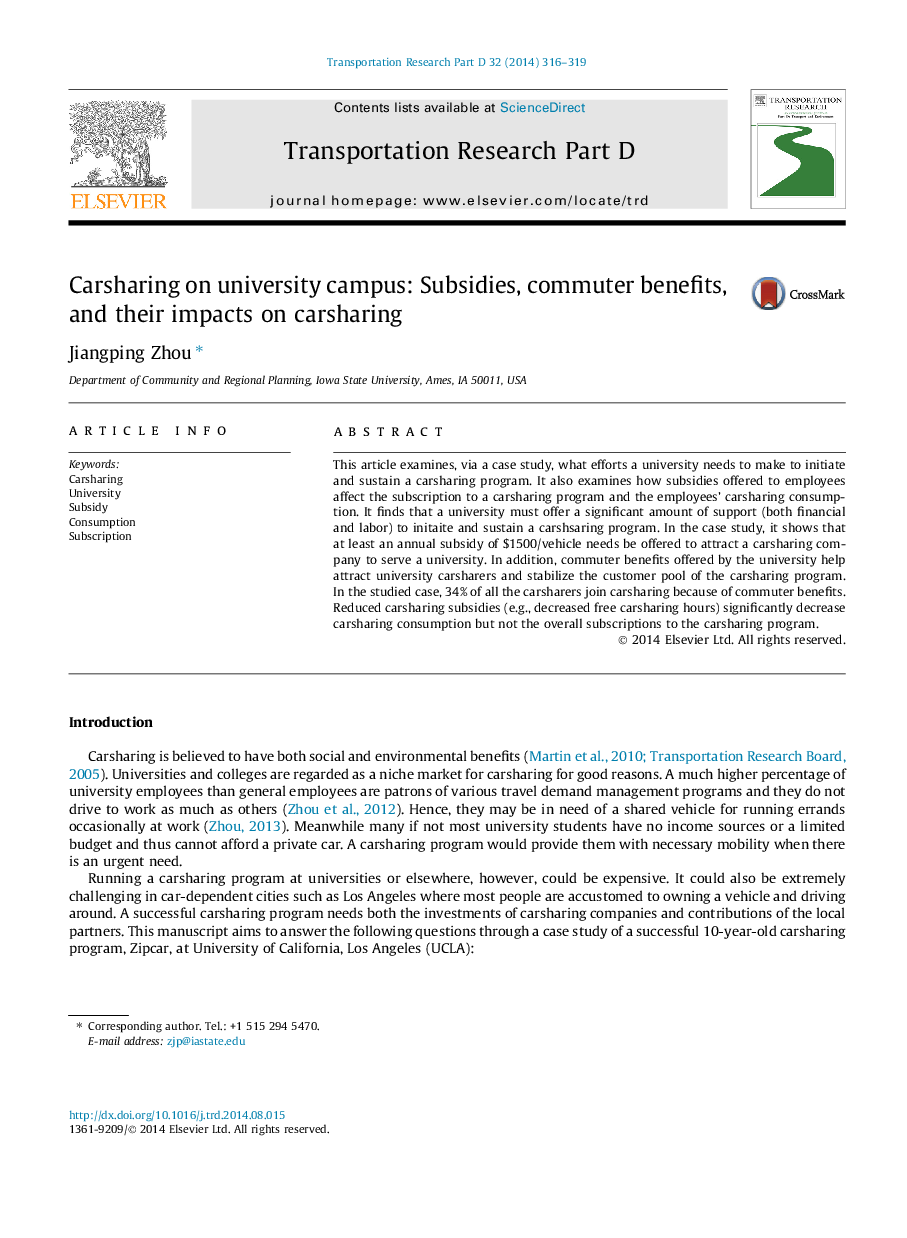| Article ID | Journal | Published Year | Pages | File Type |
|---|---|---|---|---|
| 7500968 | Transportation Research Part D: Transport and Environment | 2014 | 4 Pages |
Abstract
This article examines, via a case study, what efforts a university needs to make to initiate and sustain a carsharing program. It also examines how subsidies offered to employees affect the subscription to a carsharing program and the employees' carsharing consumption. It finds that a university must offer a significant amount of support (both financial and labor) to initaite and sustain a carshsaring program. In the case study, it shows that at least an annual subsidy of $1500/vehicle needs be offered to attract a carsharing company to serve a university. In addition, commuter benefits offered by the university help attract university carsharers and stabilize the customer pool of the carsharing program. In the studied case, 34% of all the carsharers join carsharing because of commuter benefits. Reduced carsharing subsidies (e.g., decreased free carsharing hours) significantly decrease carsharing consumption but not the overall subscriptions to the carsharing program.
Related Topics
Life Sciences
Environmental Science
Environmental Science (General)
Authors
Jiangping Zhou,
